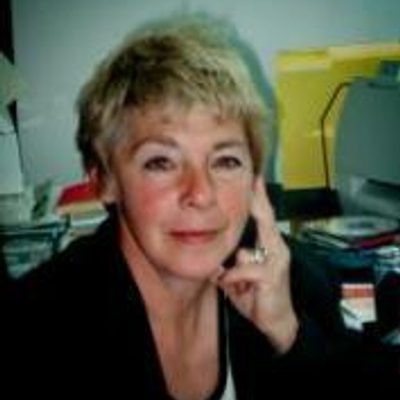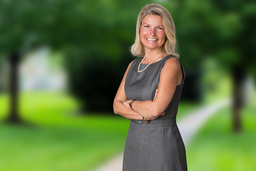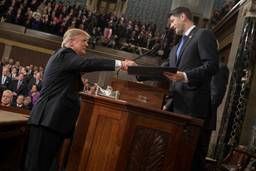West Bank Diaries
In May, the author spent ten days traveling around Israel, Palestine and Jordan with the liberal pro-Israel advocacy organization J Street. What follows are excerpts from the journal she kept during her trip.
Marilyn Katz

Day 1: May 3, 2012
We leave Tel Aviv, a sun-drenched city filled with beaches, high rises and casually-dressed Israelis, on the only road across the West Bank to Jerusalem. It’s a slick highway surrounded on all sides by a “fence” – in some places cement and in other places barbed wire, dotted with armed checkpoints. On the side of the road, Palestinian men walk through a narrow barbed wire pathway, some carrying bags, others carrying furniture. The road, I’m told, is for Israeli citizens only — those Palestinians who have permission to work in Israel must park their vehicles elsewhere, pass through a check point and board buses that exit the road shortly thereafter.
What is the purpose of this fencing? The ostensible reason — security — is less than convincing. The fences are made of barbed wire; anyone wishing to damage a road or a village could easily shoot over or through it, or simply take the risk of being cut. My guides estimate that thousands of Palestinians “penetrate” these fences to reach Israel each day. More than anything it appears that these fences are cages, locking people in, restricting their movement and ultimately making them prisoners in their own land.
On to Jerusalem. When I was here 10 years ago, I saw many Palestinians working throughout the city. Today, I am struck not only by the absence of Palestinians and Israeli Arabs, but by the massive numbers of Haredi and other Ultra-Orthodox Jews. With an average of eight children per family, the Haredi and other Ultra-Orthodox Jews are the fastest growing segment of the Israeli population, and they are a huge factor in Israeli politics and a huge drain on the economy and political life. Some of the Ultra-Orthodox, particularly the Haredi men, do not work and have been exempted from military service so that they can “study.” They all receive a government stipend for each child born. Due to their growing numbers, they have a big influence in the parliament and in the military.
Impression: The separation is total. Despite the 3 million Palestinians living in the West Bank, it is totally possible for Israelis never to encounter Palestinians and for Palestinians never to encounter Israelis, except at checkpoints.
Day 2: May 4, 2012
Just returned from a day in the West Bank. Since the 1993 Oslo Accords (which were meant to be only an interim step), the West Bank has been divided into three areas: “Area A” (large cities under the full control of the Palestinian Authority), “Area B” (smaller cities and villages supposedly under Palestinian civil authority and Israel Defense Forces (IDF) military authority), and “Area C” (the rest of the West Bank, which includes farms, villages, and individual houses the Israelis claim to be uninhabited, and which is under the complete control of the IDF).
Today, visiting Kafr-a-Dik, a Palestinian village about 20 minutes from Tel Aviv, I got a pretty good sense of what occupation means. We had lunch in the hills outside the village at the site of a summer “tea house” that had been razed the week before by the IDF. The young children of the family who built the house, which they used for shelter and rest while tending their olive trees, told us they came here last week after school only to find their “shelter” gone. It turns out that while they were at school, hundreds of IDF soldiers descended on the spot with bulldozers, destroying the shelter and the 250-year-old well along with the walled terrace that had protected the olive trees for centuries.
Day 3: May 5, 2012
How to consider Israel? It is a land of more than one reality — particularly since the Second Intifada of 2000, after which Palestinians could no longer travel freely through the country, and after which Israelis did not even go to East Jerusalem, which is like living in the New York’s East Village and never visiting the West Village.
Life in Jerusalem is pretty much like life in any urban center, except for the ever-visible presence of the Haredim, and their reflection in the larger society — there are no billboards with women on them, many radio stations do not play songs in which women sing, and on some bus routes, women are relegated to the back of the bus, despite a Supreme Court ban on the practice.
What is different is the absolute absence of the Other. As Palestinians are barred from entry to Israel, people in general don’t have to think about them, and there is a generation of young Israelis who may have never seen or met one.
In some ways it is not so different from those who live in American suburbs or rural areas and who rarely see anyone who is not like themselves. The situation in Israel is more pronounced, and is true in the cities as well as the suburbs. Ironically, it is probably only the Jewish settlers in the West Bank who have any real continuous “contact” with Palestinians, and then only as occupier of the land or as employer of menial labor —since Palestinians cannot enter Israeli cities, their only work is either in their villages for the Palestinian Authority, or as gardeners, etc., in settlers’ villages (with special work and travel permits, of course).
Day 4: May 6, 2012
After a fascinating morning meeting with the son of assassinated Israeli leader Yitzhak Rabin and other leaders across the political spectrum (with as many views as there were people in the room), we took an afternoon walk to Jaffa, the original Arab port just north of Tel Aviv, where most Jews landed when they came in the 1880s. An ancient city, Jaffa was home to 100,000 Arabs in 1948, before the war. Today, only 6,000 remain.
Dinner was at the sumptuous Tel Aviv home of an Israeli businessman. We were joined by four other “progressive” Israeli businessmen, the heads of hedge and equity funds, all of whom do business with Palestinians and with Arab countries. Three of the four, including the son of a former prime minister, are virtually uninvolved in politics and think that the market, with its lack of borders and its commitment to “innovation,” will simply take care of the issue. The most loquacious of them thinks the wall separating Palestinians from Israelis has actually helped both communities and that in separation, each population is beginning to thrive.
When I returned to my room, I wanted to see whether the most articulate and powerful speaker among these men, the one who stated that the wall has helped both Palestinians and Israelis, could have a point. The bottom line: GDP in Israel is $31,000 per capita; in the West Bank it is $2,900.
That’s all for my Sunday report.
Day 5: May 7, 2012
Today we traveled to Jordan, a stunningly beautiful country. Our first meeting was with King Abdullah, who turned out to be an exceedingly smart, thoughtful and engaging man. Needless to say, the palace was gorgeous. What could be bad about sipping tea from a gold-embossed glass in a room that makes the Metropolitan Museum of Art’s exhibit on Middle Eastern decorative arts look shabby?
We met with the king and the prime minister for about an hour. On Israel, the king was probably the most optimistic person we spoke to all day — and that wasn’t very optimistic. It is his opinion – and pretty much everyone’s we talked to – that the window for a possible two-state solution is closing fast, with Israel having totally rebuffed (to date) the Arab Peace Initiative, with Palestinians chaffing under accords that were meant to last two years, not two decades, and with the Arab Spring asserting itself as alternative mode of achieving change. He thinks, as do others, that the growth of Jewish settlements in the occupied territories and of the Palestinian population under occupation is such that if we don’t reach a two-state solution by 2013, the only options will be a dual national state (untenable for the Israelis) or an apartheid state (simply untenable).
Then on to dinner at the home of a former Jordanian Ambassador, joined by 20 other ex-ambassadors, sitting senators and leaders of Jordanian society. It was a sobering conversation. Contrary to the happy talk of the Israeli businessmen about “joint endeavors with the Arab world,” these business and political leaders have pretty much given up on Israel (despite many years of investment in the prospects and endeavor to find peace). They do not believe that the government in Israel is interested in peace, and they feel that the demographics of the West Bank settlements, which have brought more than 500,000 hard-line settlers to the occupied territories, will continue to give right-wingers the vote. They believe that the total separation of Israelis from Palestinians is breeding a new generation that could care less about peace, and that the Arab world and the Palestinians will just give up on Israel as a “member state of the region,” since it appears to them not to be interested in being one. They are horrified by the occupation and actions of the Israelis, even while understanding Israel’s legitimate desire for a state. They also rue the retreat into fundamentalism and extremism in both the Jewish and Muslim communities.
Day 6: May 8, 2012
Started off with a gracious meeting at the Jordan Parliament with the Senate Foreign Relations Committee — a self-selected group (all men) who spent about two hours with us giving their prognostications on the situation of the Middle East. All are cautious about the Arab Spring (although remember they are all friends of the King) and worry about the rise of Islamist states.
Their main point was that the Arab Spring is a wave, demanding human dignity and full citizenship rights, and that this tide will also affect Israel. Like all others from whom we heard, they believe that the window for a two-state solution — which they all favor – – is short, and they do not see a negotiating partner in Israel.
We spent the afternoon in the West Bank looking at Jewish settlements — all illegal, according to Article 49 of the Geneva Accords. Hundreds of thousands of settlers now live in the West Bank, and settlements and their “outposts” have been placed to totally surround Arab villages, confiscating Arab lands in the process and creating an internal colony.
(A note: I know when we think of settlements, we often think of the American West, where whole towns have grown. In the West Bank, settlements vary. In some cases they are huge, with thousands of residents, and resemble the gated communities of southern California or Florida. But in other places, settlements are one building on a street in East Jerusalem, or some cases whole blocks, where one or two lone Palestinian families remain.)
Day 7: May 9, 2012
Today was Israeli official politics day. We started off at the Knesset (the Israeli parliament) with a series of meetings with a variety of representatives of various parties — Labor, Meretz (the socialist party) and Kadima, which is a center-left (more center than left) break-away from Labor. It is a very tumultuous time for the Knesset. Last week, Netanyahu declared that the Knesset would be dissolved and that elections for a new parliament would be held in September. Then, on Monday night, Kadima’s leader made a radical u-turn and decided to join the Likud (Netanyahu) coalition, giving Netanyahu a 94-vote majority — if the deal holds of course…
And there are reasons why it wouldn’t hold. Kadima, while not a strong party, represents the faction that in theory wants to freeze the settlements and pursue the peace process. Likud has shown little inclination to do so. There is much speculation among all about what will happen. All say they are committed to a two-state solution, and that there isn’t much time, but all doubt the political will of Netanyahu.
Day 8: May 10, 2012
We started our day off at Hebron, a large town in the Judean mountains. We were brought to Hebron by a group called Encounter, a Jewish organization that tries to expose Israelis, American Jews and others to the realities of life in the West Bank, without commentary. Most of the Encounter members are rabbinical students, and quite lovely.
Some context: In 1929, during the Arab uprising against the British, 67 Jews in Hebron were killed by Palestinians (many, many more were sheltered and protected by their Palestinian neighbors). After that, Jews left Hebron, not to return until 1968 when they began to settle in an area just outside of the Old City’s downtown. The settlement they established grew into Kiryat Arba, which now has 7,500 residents. In 1979, a group of Hasidic families occupied an old, empty hospital in the Old City itself, creating another settlement.
After a 1994 shooting in which a settler killed 29 Palestinians (and injured dozens more), the government decided that Jews and Palestinians needed to be separated, and the barricading and death of the old Palestinian city began. Today, as you walk around the half-deserted streets of the Old City in which Palestinians still live and try to have shops, you see shuttered stores, their façades often graffitied with the Star of David.
Most disturbing is Shashuda Street, once a central street in the Palestinian community, where the vegetable and meat market once stood. The remaining Palestinians’ homes are like hen’s teeth on the first blocks of the street, squeezed among the new settlements. Many Palestinians now put screening over their interior courtyards and over their stores to protect them from the feces and trash thrown down by settlers from their higher homes.
The next block is almost fully occupied by Israelis, and Palestinians are prohibited from driving on the street. Many are not allowed to exit their homes onto the street; rather, they must exit via the roof or an adjacent apartment onto the “Palestinian street” on the other side of the block.
Day 9: May 11, 2012
From the surreal experience of Hebron we went off to Ramallah, the seat of the Palestinian Authority (PA) and the Palestinian Liberation Organization (PLO), to meet with Salam Fayyad, the PA’s prime minister. Ramallah is a bustling, modern city, with cranes dotting the skyline and the same type of buildings that you see in Jerusalem. Israelis are not allowed to visit Ramallah or any other place in the West Bank designated an “Area A” without a special permit.
Fayyad, who got his degrees at the University of Texas at Austin, is responsible for the administration of the West Bank, while President Mahmoud Abbas is the political leader. A small, fairly quiet and compact man, he was engaged and engaging. He says that they are fully committed to a two-state solution, but feels a growing sense of despair due to the lack of response by the Israelis to the Arab Peace Initiative and the refusal of Israel to halt or freeze the settlements, which, if they continue, will make a contiguous Palestinian state impossible.
He talked with pride about the growth of Ramallah’s and the West Bank’s economy and the reduction of violence. But he fears that the delays in the peace process, the jailing of hundreds of Palestinians, the sense of hopelessness, the confiscation of Palestinian homes and lands, and the settler violence against Palestinians will once again lead to violence.
As for him, he is engaged in “constructive defiance.” For example, after the IDF bulldozed a road the Palestinian Authority had built in the West Bank to connect two villages, the PA rebuilt the road. After the IDF again bulldozed the road, the PA rebuilt it a third time, and for now, the road still stands.
Day 10: May 12, 2012
Lunch in Ramallah was hosted by the emerging young business and political leaders of Palestine. Among them were investment bankers, youth leaders and a number of entrepreneurs. All came back to Palestine — from Harvard, MIT, Stanford and the like — to nation-build, and all are frustrated, some only with the U.S., and others with the PLO and the Abbas leadership as well. They speak of the degradation of being stopped at checkpoints on their way to business meetings in Israel (despite their permits). They speak about supplies and goods being held up by the Israelis for months at a time, and the impossibility of generating a real economy, as Israel controls the timing and the content of all imports and exports. While all believe in a two-state solution, they are really beyond that. Their demand, very simply, is that the occupation — it’s walls, its rules — be ended now.
The day ended with a trip to Neve Shalom, a community on a hilltop above the lush and fertile valley between the mountains and Tel Aviv, the green belt of Israel. Established more than 30 years ago, Neve Shalom is a “model village” where an equal number of Israeli Arabs and Israeli Jews have created a community committed to providing a model of integrated living. We joined members of the Sulha Peace Project for an evening of “encounter” between Palestinians and Israelis. Founded by Palestinian and Jewish leaders, the organization regularly brings together Palestinians and Jews for song, talk and sharing. Not exactly my cup of tea, yet I was moved and impressed nevertheless with this people-to-people grassroots attempt to envision a new way of being.
In the end, though, it isn’t enough. The two groups may break bread and sing together tonight, but their ability to even come together at all is dependent on the benevolence of more gracious occupiers who give out “get out of jail for a day” cards to the occupied. And at the end of the day, the occupied go back to their cages.








